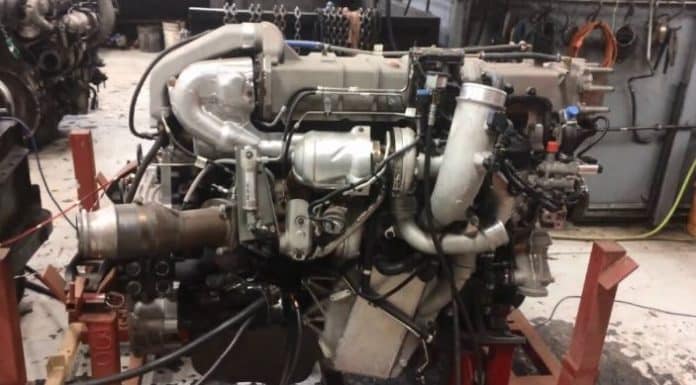
Table of Contents
Understanding the need for better emissions control while providing maximum performance, Navistar International created the Maxxforce 13 engine. With impressive responsiveness, excellent fuel economy, and a smoothly performing engine, the Maxxforce 13 engines had promised to give truckers many happy years on the road. Unfortunately, this was not the case as many problems arose with the EGR which led many truckers to delete the EGR which then led to further problems. In this article, we will focus on Maxxforce 13 EGR delete problems.
Maxxforce EGR Issues
The advanced EGR present in the Maxxforce 13 engine has been specially engineered by Navistar to work without the requirement of additional equipment, which means more payload is made available on your machine.
To get the most out of your vehicle, here we present some of the problems detected with Maxxforce 13 EGR and their solutions.
Common Maxxforce 13 EGR Delete Problems
PROBLEM 1: Black Smoke Is Appearing from The Exhaust
The primary job of the EGR is to help reduce nitrogen oxide emissions from the engine. This is done by allowing in the cooled exhaust gas into the air inlet duct to keep temperatures low enough so that nitrous oxide does not form in the first place.

Black Smoke Is Appearing from The Exhaust
If you are seeing black smoke appearing and have taken this to a mechanic who has stated a possible issue with the EGR valve of your Maxxforce 13 engine, you will need to locate the valve and then clean the EGR cooler. Follow the steps below to complete this.
- Make sure the gasket seals properly by cleaning all the mating surfaces.
- Check the EGR system for any leaks or damage and replace any damaged parts
- Use your truck service manual to locate the valve and check for damages.
- Clean the EGR cooler inlet fins to remove any dirt accumulated there.
These steps should enable the rear EGR cooler adaptor valve to close again without any problems, and cleaning the system will stop the issue of the black smoke appearing.
PROBLEM 2: Low Power Seen From Maxxforce 13 Engine But No Error Codes Display
If you notice that the Maxxforce 13 is suddenly showing reduced power output, but no error code is seen, this indicates a problem with the EGR valve. The EGR valve will, therefore, need to be located and cleaned with a suitable solvent so that any debris present that is blocking it from closing correctly is removed. Once these steps have been performed, you should see an improvement in the power levels.
You can use the cleaning management system to perform the cleaning of the EGR valve. Here are the steps you will need to follow:
- Station the vehicle within a few meters of a drain so that excess fluids can be drained out.
- Turn the heater pump off.
- Plug the cleaning management system into a 110V socket.
- Fill up the cleaning management system reservoir with 5 gallons of ordinary water, followed by two cans of 2.5 gallons of EGR cleaning solvent.
- Turn the heater on to warm up the cleaning solvent.
- Remove the heat shields and EGR valve by following the processes outlined in your truck’s manual.
- Cleanse the EGR cooler inlet to free it of any debris.
- Take out the bolts that keep the EGR outlet tubes joined to the EGR module cover.
- Replace the gaskets. Wipe away any debris and replace the bolts.
Perform the entire cleaning management system process as mentioned in the guide that comes with the product. Ensure that the cleaning is complete and your truck should perform better than before.
PROBLEM 3: The High Temperature Or Low-Temperature EGR Cooler Is Leaking And Needs To Be Replaced
For the Maxxforce 13 EGR to perform correctly at all times, the EGR cooler assembly needs to be properly aligned. Any problems with this alignment can lead to coolant leakage which will ultimately lead to engine failure.
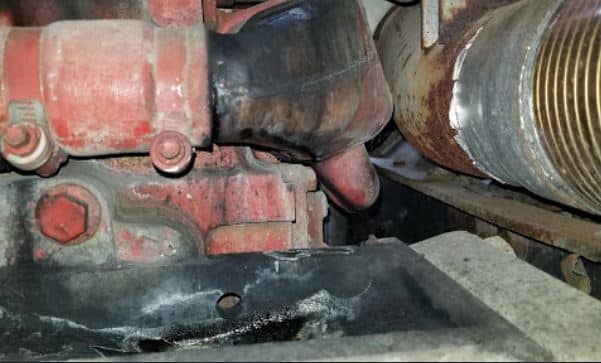
EGR Cooler Is Leaking maxxforce
The EGR cooler alignment tool can be used to put back the EGR cooler assembly once the coolant has been replaced, ensure proper alignment so that there is no leakage.
Perform the steps below to complete this action:
- Remove the EGR cooler assembly from the engine after referring to your truck’s manual.
- Install the EGR cooler assembly onto the EGR cooler alignment tool by placing in a vise and then tightening the vise jaws.
- Remove and replace the washers and socket screws.
- Clean the mating surfaces of the mid-plate and the respective high or low-temperature EGR cooler.
- Once the complete process is done, secure the cooler halves once again and remove the cooler assembly from the alignment tool.
PROBLEM 4: EGR Cooler Heat Exchanger Leak Leads To An Excess Pressure
The EGR cooler system is vital to ensure that temperatures within this system remain below a certain temperature, and subsequently a certain pressure level.
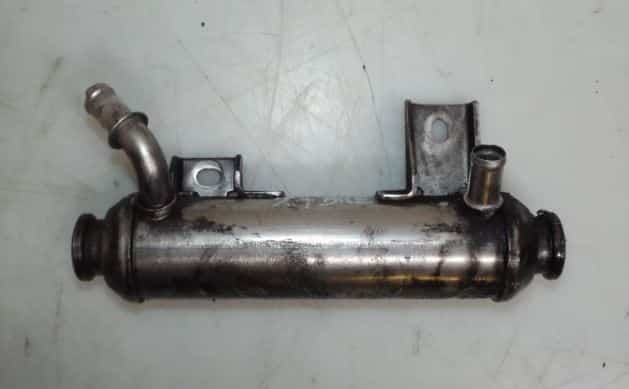
EGR Cooler Heat Exchanger
To prevent this problem, the Navistar International coolant tool can be used. This tool greatly simplifies the process of maintaining the complex cooler system of the Maxxforce 13 EGR so that you can give longer life to your engine. The coolant tool uses adaptors that create a powerful vacuum out of standard air to force the coolant out of the entire system. This then allows for the pressure to be tested and the system diagnosed for repairs to be carried out as necessary. A vacuum module is then introduced so that there is no air trapped in the system. It is through the presence of air that heat can cause the cooling system to suffer damage.
How Navistar Fixed Its Maxxforce 13 EGR Problems
In an attempt t fix the many problems, Navistar made a number of changes to their engines:
- One of the first changes the company made was to hardwire the connection from the turbo air control valve to lessen the likelihood of the connection becoming lose and dislodging.
- They increased the length of the EGR shaft by 30%. This was so that it would be less likely to stick.
- They increased the exhaust valves in the EGR cooler
- Tey removed some shard edges within the device that was damaging some components.
How To Get Your Truck Fixed By Navistar?
Navistar has a Diamond Renewed program wherein they take in used trucks and reconditions them with the improvements to the EGR system. If your Navistar International MaxxForce truck was built since 2013, then you shouldn’t have to worry as Navistar trucks since then should have the fix.
Should You Delete Your Maxxforce EGR?
With all these problems, it is only natural for truck owners to consider some alternative solutions. One of the most popular options is called EGR delete, which completely shuts down the system.
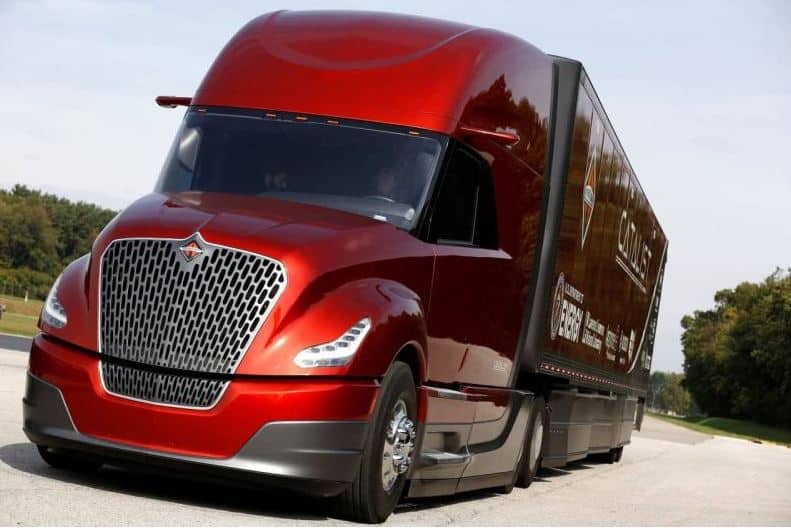
Navistar truck maxxforce 13
- It Is Illegal: With strict regulation about emission control and inspections, a truck with a deleted EGR system will have a hard time passing a smoke test. And in the worse case scenario, a truck owner might end up with a steep ticket.
- Environmentally Harmful: It is very harmful to the environment. And it is not just about the trees or polar bears. Excessive amounts of soot, carbon monoxide, or nitrogen oxides can have a serious health impact.
- May Damage Your Engine: Lastly, it may be very damaging to the engine, as it was designed to work with charge air that contains a certain amount of exhaust gases. Elimination will lead to higher combustion temperatures, which can have an irreversible impact on the engine’s internal parts.
So what can you do to avoid the dreaded EGR problems? First of all, get this system running correctly. If some components are not working correctly, replace them. Also, as prevention is the best cure, make sure you follow these guidelines:
- Use only high-quality fuel, as this reduces the amount of soot
- Don’t skip engine oil changes
- Be careful not to overfill the engine oil
- Use correct grade of engine oil
- Check the crankcase ventilation system for blockage
- Perform regular maintenance
Why Do Maxxforce Engines Use EGR?
Modern diesel engines have several advantages, with low fuel consumption being just one of them. The development of variable turbochargers and sophisticated fuel injection systems enabled wide torque range and faster throttle response are achieved.

As a result, diesel-powered vehicles offer a strong pull from low revs and smooth drive. This makes them ideal for heavy-duty applications. You will find diesel engines in many big pick-up trucks, as well as in most trucks and buses.
Diesel Engines and Exhaust Pollutants
Still, there are several downsides, with a higher amount of harmful pollutants in exhaust gases being one of them. Compared to a gasoline engine, not only it will produce more nitrogen oxides or carbon monoxide, but it also produces far more soot.
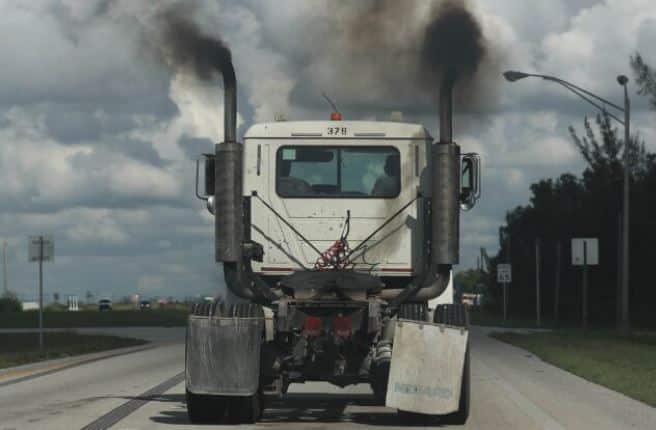
Diesel Engines and Exhaust Pollutants
To make things worse, trucks and buses usually do more miles than cars, thus emitting higher amounts of exhaust gases. This makes diesel-powered vehicles a big part of overall air pollution. Although this problem was largely ignored in the past, things have changed. Emission control systems have become one of the main concerns in engine development over the last ten years.
Every few years, new government regulations increasingly demand the reduction of harmful pollutant emissions. In most cases, the emphasis is on the amount of nitrogen oxide and soot produced by diesel engines. This means that vehicle manufacturers are forced to install more and more complex devices and systems to meet those regulations.
Different Ways To Reduce Diesel Emissions
There are several ways to reduce emissions. Diesel Particle Filters, or DPF, are used to eliminate soot, but they don’t do anything about the NOx. This is where either SCR (Selective Catalytic Reduction) or EGR (Exhaust Gas Recirculation) comes into play. While Selective Catalytic Reduction system is a more simple solution of the two, it still has some downsides. Not only that it requires one additional fluid to be regularly filled up, but also this DEF fluid can freeze and crystallize during cold winters.
Exhaust Gas Recirculation system, on the other hand, is a self-sufficient system that does not need any intervention from the driver.
EGR In Cars and Heavy Duty System
This system has been used in cars for decades. And, being relatively simple, they rarely cause problems or costly repairs. Still, the situation is a bit different when it comes to big truck engines. Unlike a car system that only has few pipes and a control valve, EGR systems on heavy-duty engines are a bit more complex. The main difference is the additional cooler, which lowers the exhaust gas temperature before it is mixed with intake air.
As the cooling core is very dense, oil vapors, poor engine combustion, or unfavorable driving style can cause the formation of carbon deposits. As a result, exhaust flow will be obstructed. In most cases, this can be cured by using strong EGR cleaners if it is done on time. Another possible problem is a coolant leak caused by a broken cooling core, which can cause engine overheating or even a hydro-lock. This is something where only a new cooler core will help.
Maxxforce Engines and Emissions
Navistar’s Maxxforce engines can be found in many heavy-duty vehicles, with International trucks lineup being one of the biggest. This revolutionary big bore engine was designed to be superior in every category. It excels in efficiency, durability, and drivability. When compared to other engines, it is not only more powerful. It is also lighter, stronger, and more durable, all thanks to a compacted graphite iron cylinder block. And, as it features advanced emission control technology, EPA regulations are met without the need for DEF fluids. All of this makes it perfect for commercial use. In theory, at least.
However, as these trucks started racking up miles, several problems have surfaced. Although generally reliable, Maxxforce engines are known to have a number of emission control-related problems. And Exhaust Gas Recirculation system issues take the top spot. This is due to problems such as carbon build-up or cooler matrix leakage. In extreme cases, EGR failure can cause irreversible engine damage.
Conclusion
These are some of the common issues that you may have observed your Maxxforce 13 EGR truck. In case of other low power issues or overheating issues that you may see, it is best to replace the EGR. Fortunately, the Maxxforce 13 EGR is not too expensive to replace, and it is the best way to fix any issues that don’t have a distinct error code displaying. Always use a Navistar certified tool to replace or pry open any of the Maxxforce 13 EGR parts so that you can reduce damages to the engine system
 by
by